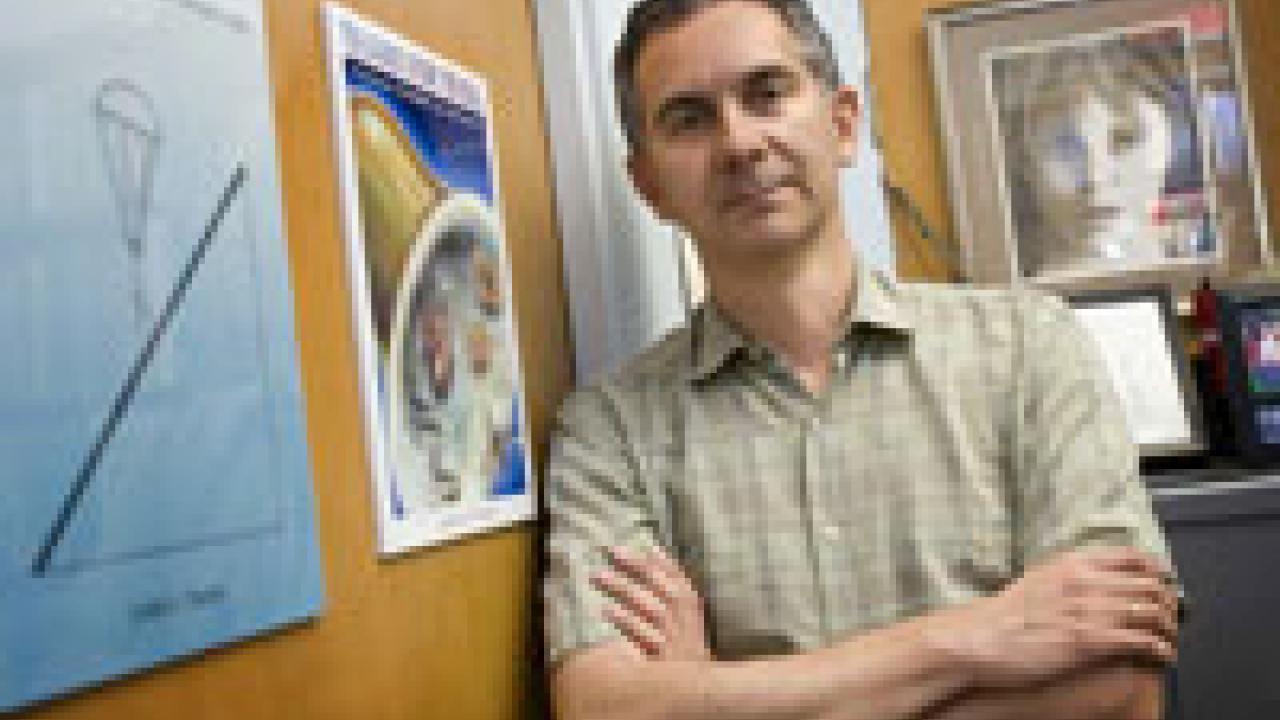Carlos Puente has something he wants to share. In the mathematics of nature's complexity, he sees a manifestation of the divine — an example of love, faith and serenity.
"We can learn from the ways of nature by reflecting on how nature creates complexity," he said.
It was not always that way for the professor of land, air and water resources. Raised Catholic in Colombia, Puente was, he said, "not very religious" when he arrived at UC Davis in 1986 after completing his doctorate and postdoctoral work at the Massachusetts Institute of Technology.
Puente was trained as an applied mathematician and hydrologist, using mathematics to model rainfall patterns. Early in his career, he became dissatisfied with the state of the art in hydrologic modeling. Like many other natural phenomena, rainfall patterns at a specific site show complexity: They emerge from simple starting conditions (temperature, humidity, wind) but are hard to predict, and small changes in the initial conditions can have a large effects.
During the 1980s, a whole field of mathematics, including fractals and nonlinear equations, emerged that took apparently simple equations and created fantastical patterns.
Puente began thinking about linking atmospheric turbulence and fractals. He found that by passing turbulence data through a fractal function, he could get an output representing rainfall patterns. Then he began to think, what if you start with a pattern and work back to the function?
He has worked on these transforming functions ever since. At the same time, Puente's own life has been through some transformations. When he was in college, his mother died, leaving him with "a sense of brokenness, a lack of peace in the heart," he said. Later, as a graduate student at MIT, a friend reintroduced him to matters of faith and suggested he could have an encounter with God.
But it was not until many years later, when he was pondering his research on a transformation of turbulence into a bell curve while commuting regularly between Vallejo and Davis, that he had what he calls his first "mountain top experience."
"I could see my whole life, recognize the things I have done wrong, accept and forgive the things that were done to me," Puente said. The experience lasted "for hours," he said, and when it was done, "I said, 'Jesus, you must exist, or none of this makes any sense,' and I felt light and warmth and stillness came into my being."
After his epiphany in 1989, Puente began to read a lot of religious writings, noticing many symbols of chaos and harmony that he felt had echoes in his work. He spent a sabbatical at the Santa Fe Institute in New Mexico reading and annotating scripture, something he acknowledges that probably not many scholars at the institute — known for advanced mathematics and complexity theory — have likely done. At the end of that sabbatical, he was also probably the first Santa Fe Institute scholar to go straight to a nearby monastery for another six weeks to work on a book.
That book, The Fig Tree and The Bell, synthesizes Puente's thinking about how lessons from science and religion can show us how to be better people. The book has not been published, although extracts are available on Puente's Web site. In the meantime, he began to incorporate some of these ideas into his lectures and presentations. The Fig Tree and the Bell is the basis for a freshman seminar class, Chaos, Complexity and Christianity; see http://puente.lawr.ucdavis.edu/chaos_complexity_christianity.htm.
In his 2003 book, Treasures Inside the Bell: Hidden Order in Chance, (World Scientific Publishing), he described a novel construction of the bell curve that generates exotic patterns reminiscent of living structures and ice crystals.
His most recent book, The Hypotenuse: An Illustrated Scientific Parable for Turbulent Times (Authorhouse, 2006), uses math as an avenue to explain how Puente believes we can achieve peace and harmony in our lives.
"Take a stick of modeling clay," he said, "and split it off on a 70-30 proportion. Squash the large piece and stretch the short piece so they are of equal length, and the same length together as the original. Repeat the process on each piece, and then repeat again and again as a cascade."
The smooth piece of clay quickly turns into what Puente describe as thorns, or dust — chaos or division.
When he looked at these sorts of patterns and games, "not only did I see natural turbulence, but I saw myself," he said.
"Games are useful not only to talk about nature but to talk about us," he said, a metaphor for inequity, discrimination and fear.
The answer, he said, is to run the cascade in reverse, "cut the hills and fill the valleys." Using a technical term from aerodynamics, Puente suggests "living life at a low number, slowly, without turbulence."
"It is imperative to put one's life in order and to love everyone, even our enemies."
In mathematics, such repeating cascades can go on forever. In the physical world, they dissipate. And while Puente believes his religion is a way to avoid personal turbulence, he notes that atmospheric turbulence is a useful thing — bringing rainfall, for example.
Puente believes that the call to stillness and harmony is a universal message at the root of all religions, and he does not accept that science and theology should be separated. There are connections between the two and they are useful, he said.
Recently, Puente was invited to Rome to share his views at the Regina Apostolorum University, a Pontifical Institution with a Master's Program in Science and Faith. From there, he has sent his books and writings to a few cardinals and even to the Pope.
"I'm sharing with whoever wants to listen," he said.
Media Resources
Clifton B. Parker, Dateline, (530) 752-1932, cparker@ucdavis.edu
